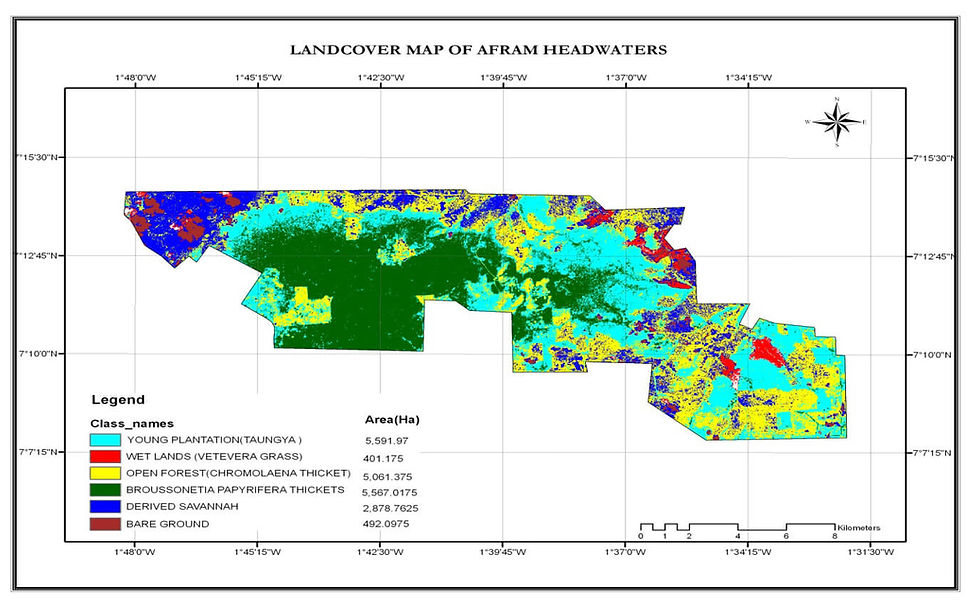

Afram Headwaters Forest Reserve
In Ghana, you have a diverse set of climatic conditions. Mere Plantations site is located within the Afram Headwaters Forest Reserve (AHFR) in the Ashanti Region of Ghana.
The AHFR is located in the "Transition Zone", the moist semi-deciduous forest agroecological zone. In short, perfect climatic conditions for the commercial growing of high quality tropical hardwood. Ghana's location is in the prime growing zone for Teak (plus or minus 5° from the equator).
Mere plantations own the leasehold rights to over 4,000 hectares of fully-degraded former forestland, split into two sites ("A" and "B").
Location
A Brief History
1927
Afram Headwaters is formally constituted s a Forest Reserve, with demarcations of the forest boundaries being taken between 1928-1930
1951
The boundaries of the forest reserve are re-demarcated. At the time, the reserve was described as well-stocked with valuable timber species such as Iroko, Sapele, Mahogany, Denya and Ofram.
1961
Post-Ghanaian independence in 1957, Afram Headwaters is gazetted as a production forest reserve, meaning the area became legally constituted and managed by the Forestry Commission of Ghana in trust of the people. Gazetted Forest Reserves are used for the production of timber and provision of environmental services.
1983
Nationwide wildfires significantly damage the ecosystem health of Afram Headwaters, with invasive species such as York and Acheampong weed increasing fire severity. At the same time, it is reported that timber harvesting was occurring at unsustainable levels, beginning the degradation of the forest reserve.
1986-2009
Fires with increasing severity degrade the forest reserve further, and timber salvage permits are issues to reduce fire severity and salvage commercial timber. As a result of resource constraints within Forestry Commission, the timber permits were often exceeded and perfectly healthy trees were ilegally logged. This continued until the forest reserve was classified formally as "Fully Degraded Former Forest Land".
In many areas where the deforestation occurred, enroachment farms were established and further degraded the soil and ecosystem through extensive herbicide use and "slash-and-burn" agriculture.
2010/2011
Mere starts its first proprietary planting, protecting the remaining old-growth trees and beginning the return of Afram Headwaters to forest cover.
Afram Headwaters - in pictures


.jpg)